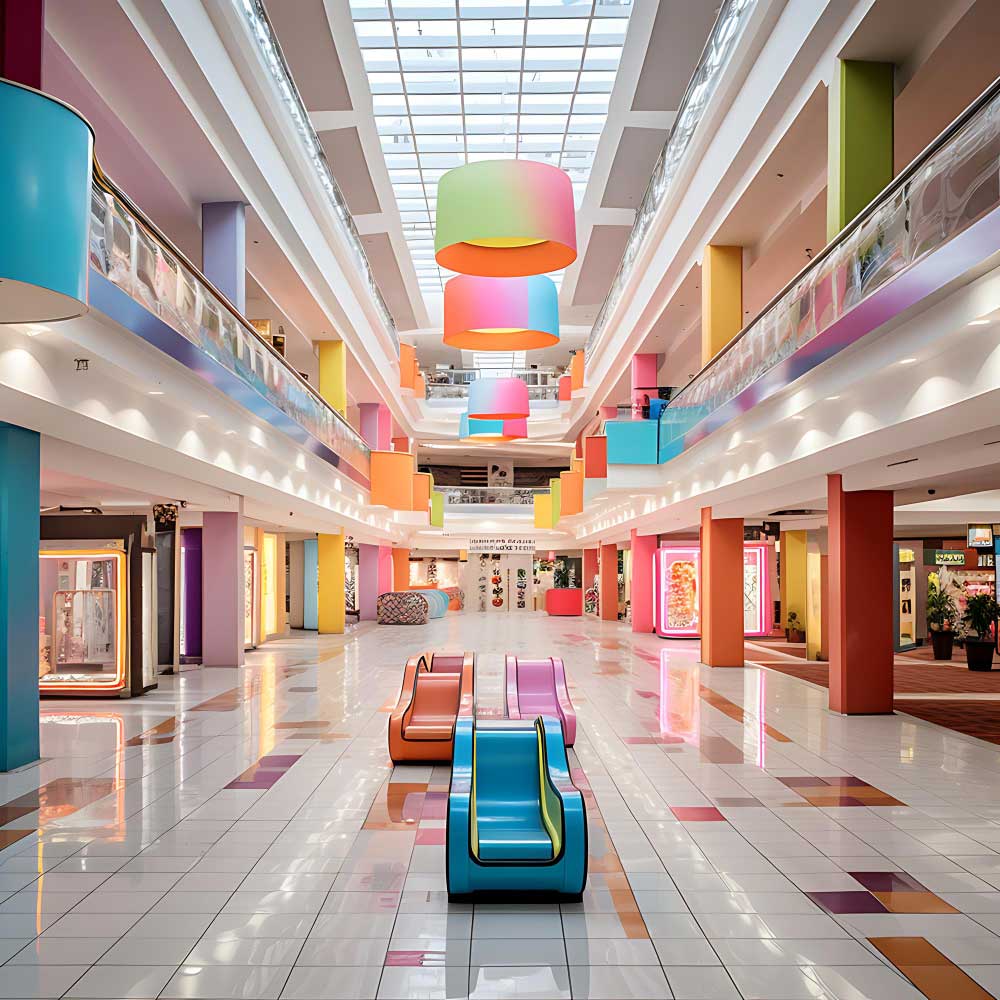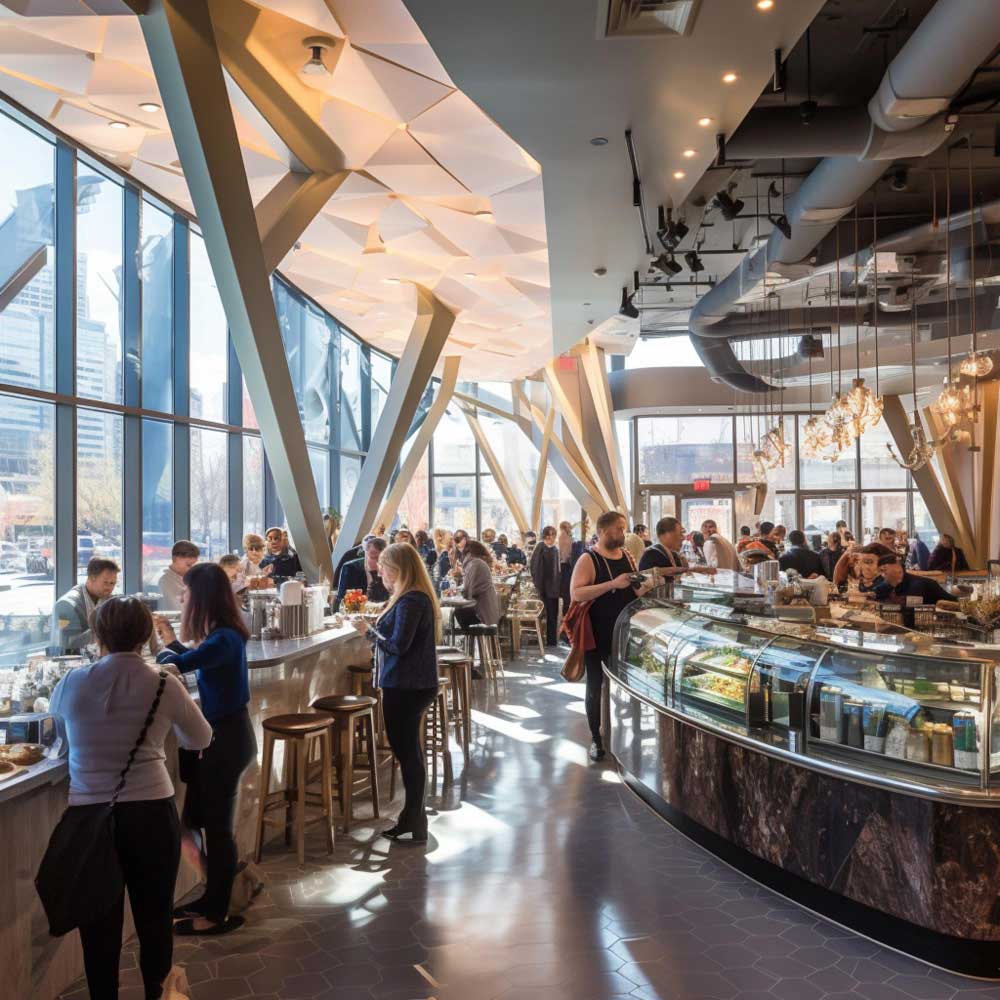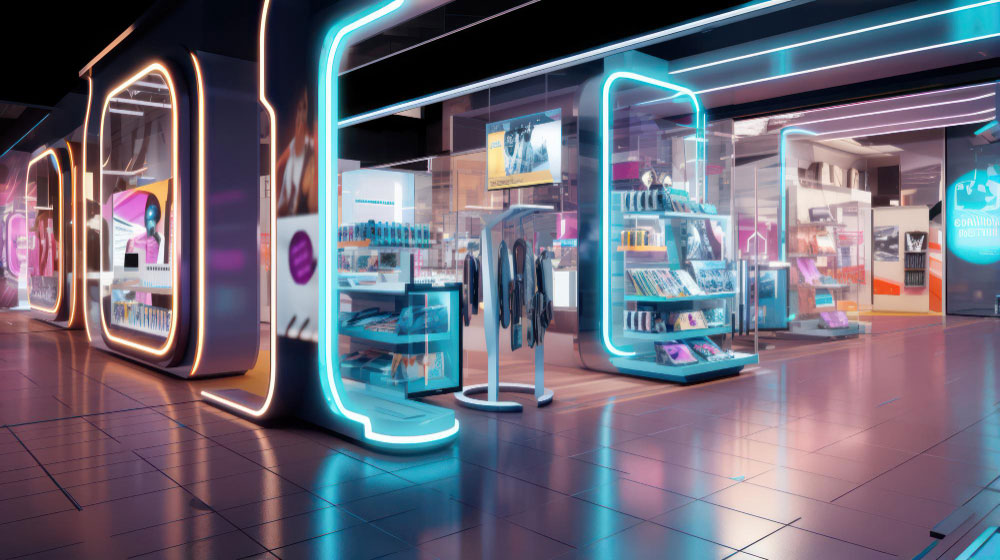This website uses cookies so that we can provide you with the best user experience possible. Cookie information is stored in your browser and performs functions such as recognising you when you return to our website and helping our team to understand which sections of the website you find most interesting and useful.

Indoor Malls: Where Shopping Dreams Come True

Indoor malls have long been a popular destination for shoppers, offering a wide range of retail stores, dining options, and entertainment facilities all under one roof. Let’s explore the evolution of indoor malls and the benefits they provide to shoppers.
Evolution of Indoor Malls

The concept of indoor malls originated in the mid-20th century as a response to changing consumer preferences and the need for a more convenient shopping experience. The first indoor mall, Southdale Center, opened in 1956 in Edina, Minnesota, setting the stage for a new era of retail.
Over time, indoor malls have evolved to become more than just a place for shopping. They have transformed into vibrant community spaces that offer a mix of retail, entertainment, and dining options. Today, indoor malls continue to adapt to changing consumer behaviors and technological advancements to enhance the overall shopping experience.
Benefits of Shopping at Indoor Malls
There are several advantages to shopping at indoor malls that continue to attract shoppers year after year.
1. Convenience: Indoor malls provide a one-stop shopping destination where shoppers can find everything they need in one location. With a variety of stores offering different products and services, shoppers can save time and energy by visiting a single mall instead of multiple stores or locations.
2. Variety of Products: Indoor malls house a diverse range of retail stores, from high-end brands to budget-friendly options. This wide selection of stores allows shoppers to explore different styles, compare prices, and find products that suit their preferences and budget.
3. Customer Service: Indoor malls often prioritize customer service to provide an exceptional shopping experience. Retailers within malls are focused on creating a welcoming environment and providing assistance to shoppers. From knowledgeable staff to easily accessible information desks, shoppers can rely on the support and guidance available within indoor malls.
To find indoor malls near you, check out our article on shopping malls near me. Additionally, if you’re interested in exploring outlet malls that offer discounted prices, our article on outlet malls provides valuable information.
Indoor malls have become more than just places to shop; they have become community hubs where people gather, enjoy leisure activities, and create lasting memories. As indoor malls continue to adapt to changing consumer needs and embrace technology, they remain a go-to destination for shopping, dining, and entertainment.
Features of Indoor Malls

Indoor malls offer a wide range of features and amenities, making them popular destinations for shopping, dining, and entertainment. Let’s explore some of the key features you can expect to find in indoor malls.
Retail Stores
One of the main attractions of indoor malls is the diverse selection of retail stores they offer. From fashion boutiques to electronics outlets, indoor malls house a variety of stores catering to different interests and preferences. Whether you’re looking for the latest fashion trends, home decor, or specialty items, indoor malls provide a convenient one-stop shopping experience.
The retail stores in indoor malls often include both well-known national chains and local businesses, offering a mix of familiar brands and unique offerings. This variety allows shoppers to explore different options and discover new products. Additionally, many indoor malls have anchor stores that serve as major attractions, featuring larger department stores or popular brand outlets.
Dining Options

Indoor malls are not just about shopping; they also provide a wide range of dining options. From casual eateries to upscale restaurants, indoor malls offer a diverse culinary experience to suit various tastes and budgets. Whether you’re in the mood for a quick bite, a family-friendly meal, or a fine dining experience, indoor malls have something for everyone.
The dining options in indoor malls often include food courts with a variety of cuisine choices, ranging from international flavors to local favorites. Many malls also feature sit-down restaurants, cafes, and dessert shops, providing shoppers with a place to relax, refuel, and socialize during their visit.
Entertainment Facilities

Indoor malls are not just about shopping and dining; they also serve as entertainment hubs. Many malls incorporate entertainment facilities to enhance the overall visitor experience. These facilities can include cinemas, arcades, bowling alleys, and even indoor playgrounds for children. Such amenities make indoor malls a great destination for families and individuals looking for a fun-filled outing.
By providing a range of entertainment options, indoor malls create an inviting atmosphere where people can enjoy leisure activities alongside their shopping and dining experiences. These facilities add an extra dimension to the overall mall experience, making it more than just a place to shop.
The features of indoor malls, including the variety of retail stores, dining options, and entertainment facilities, contribute to their appeal as vibrant and convenient destinations for shopping, dining, and entertainment. Whether you’re looking for the latest fashion trends, a delicious meal, or a fun-filled activity, indoor malls offer something for everyone.
Shopping Experience at Indoor Malls

Indoor malls offer a unique and enjoyable shopping experience, providing convenience, variety, and excellent customer service. Let’s explore these aspects in more detail.
Convenience and Comfort
One of the key advantages of shopping at indoor malls is the convenience and comfort they provide. These malls are designed to offer a hassle-free experience, with ample parking spaces, well-maintained walkways, and easy accessibility. Shoppers can enjoy a comfortable and climate-controlled environment, regardless of the weather outside.
Indoor malls also offer a range of amenities, such as clean restrooms, seating areas, and baby-changing facilities, to enhance the overall convenience and comfort for shoppers. Additionally, the layout of indoor malls is often well-organized, making it easy to navigate between stores and locate the desired products.
Variety of Products
Indoor malls are known for their extensive selection of retail stores, offering a wide range of products to cater to different needs and preferences. Whether you’re looking for fashion apparel, electronics, home decor, or beauty products, indoor malls have something for everyone. The diverse range of stores within the mall provides shoppers with the convenience of finding everything they need under one roof.
To enhance the shopping experience, indoor malls often feature anchor stores, which are larger stores that act as major attractions within the mall. These anchor stores typically offer a wide range of products across various categories, attracting shoppers with their extensive selection and competitive prices.
Customer Service

Customer service is a crucial aspect of the shopping experience, and indoor malls are known for their focus on providing exceptional service to shoppers. The staff at indoor malls are trained to assist customers, answer their queries, and provide guidance when needed. Whether it’s locating a specific store, finding a particular product, or providing recommendations, the dedicated mall staff aim to ensure a pleasant and satisfying shopping experience.
In addition to the assistance provided by staff members, many indoor malls also offer other customer-centric services, such as personal shopping assistants, concierge desks, and information kiosks. These services further enhance the overall shopping experience, making it more convenient and enjoyable for shoppers.
The shopping experience at indoor malls is designed to be enjoyable, convenient, and customer-oriented. With their emphasis on convenience, a wide variety of products, and excellent customer service, indoor malls continue to be popular destinations for shoppers of all ages. Whether you’re seeking the latest fashion trends, electronic gadgets, or simply looking to explore different stores, indoor malls offer a comprehensive shopping experience.
Sustainability Initiatives in Indoor Malls
In recent years, there has been a growing focus on sustainability within the retail industry, and indoor malls are no exception. Many indoor malls are implementing various sustainability initiatives to reduce their environmental impact and promote eco-friendly practices. This section will explore some of the key sustainability initiatives undertaken by indoor malls, including green building practices, energy-efficient measures, and waste management.
Mall Green Building Practices

Indoor malls are increasingly adopting green building practices to minimize their carbon footprint and promote environmental sustainability. These practices include using eco-friendly construction materials, incorporating energy-efficient lighting systems, and implementing efficient heating, ventilation, and air conditioning (HVAC) systems. By utilizing sustainable building materials and energy-saving technologies, indoor malls can reduce energy consumption and lower greenhouse gas emissions.
Energy-Efficient Measures
To further their sustainability efforts, indoor malls are implementing energy-efficient measures throughout their operations. This includes using LED lighting systems, installing motion sensor lights to conserve energy when areas are not in use, and optimizing HVAC systems for improved energy efficiency. By adopting these measures, indoor malls can significantly reduce their energy consumption and contribute to a greener environment.
Waste Management
Effective waste management is another crucial aspect of sustainability initiatives in indoor malls. Malls are implementing strategies to minimize waste production, promote recycling, and reduce landfill waste. This includes providing designated recycling bins throughout the mall premises, encouraging tenants and visitors to recycle, and partnering with waste management companies to ensure proper disposal of waste. By prioritizing waste reduction and recycling, indoor malls play a significant role in minimizing the environmental impact of consumer waste.
To showcase the impact of sustainability initiatives, here is a table highlighting some sustainability metrics in a typical indoor mall:
| Sustainability Metric | Average Indoor Mall |
|---|---|
| Energy Consumption Reduction | 20-30% |
| Water Consumption Reduction | 15-25% |
| Waste Diverted from Landfills | 40-60% |
By adopting green building practices, implementing energy-efficient measures, and prioritizing waste management, indoor malls are taking active steps towards sustainability. These initiatives not only reduce the environmental impact of malls but also contribute to creating a more sustainable future for the retail industry as a whole.
Future Trends in Indoor Malls
As the retail landscape continues to evolve, indoor malls are embracing various trends to stay relevant and meet the changing needs of consumers. Let’s explore three key future trends that are shaping the indoor mall experience.
Integration of Technology

Indoor malls are increasingly incorporating technology to enhance the shopping experience. From interactive digital displays to augmented reality (AR) try-on experiences, technology is revolutionizing the way consumers engage with products and brands. These advancements allow shoppers to virtually explore stores, access personalized recommendations, and make informed purchasing decisions.
Furthermore, indoor malls are integrating technology to streamline operations and improve convenience. This includes features like mobile apps for navigation and real-time updates on mall hours and events. Additionally, some malls are implementing smart parking systems that guide visitors to available parking spots, saving time and reducing frustration.
Community Spaces
To foster a sense of community and encourage social interactions, indoor malls are incorporating community spaces within their premises. These spaces provide gathering spots for people to connect and engage in various activities beyond shopping. They may include communal seating areas, outdoor plazas, and event spaces for live performances, exhibitions, and community events.
By creating vibrant community spaces, malls are transforming into destinations where people can not only shop but also relax, socialize, and immerse themselves in a broader experience. These community spaces help to cultivate a sense of belonging and make indoor malls more than just shopping centers.
Adaptation to Changing Consumer Behavior
Indoor malls are continuously adapting to changing consumer behavior to meet their expectations and preferences. With the rise of e-commerce and online shopping, malls are reimagining their role as more than just a place to make purchases. They are focusing on providing unique experiences that cannot be replicated online.
This entails curating a mix of retailers that offer experiential shopping, such as interactive demonstrations, pop-up shops, and limited-edition releases. Indoor malls are also embracing the concept of outlet malls, which provide discounted prices on popular brands, attracting value-conscious consumers.
Additionally, malls are exploring innovative concepts like showrooming, where customers can try out products in-store before making online purchases. This allows malls to bridge the gap between online and offline shopping experiences, catering to the needs of tech-savvy consumers who prefer to research products before buying.
By integrating technology, creating community spaces, and adapting to changing consumer behavior, indoor malls are ensuring their continued relevance and appeal in the retail landscape. These future trends aim to provide an engaging, convenient, and personalized shopping experience that meets the evolving needs of shoppers.






